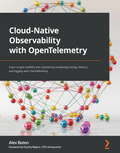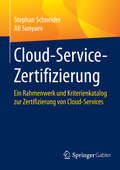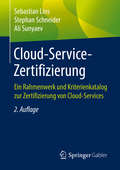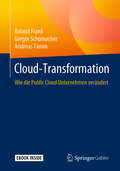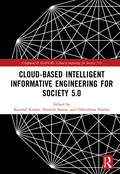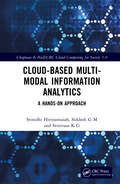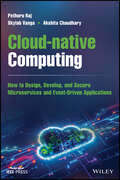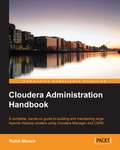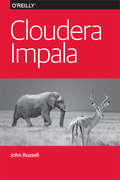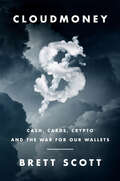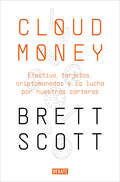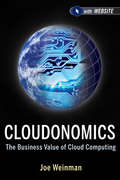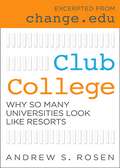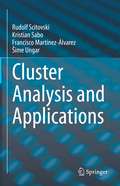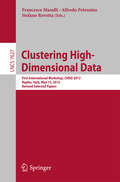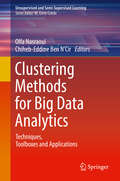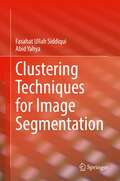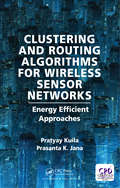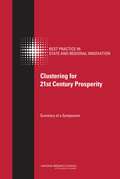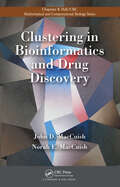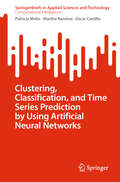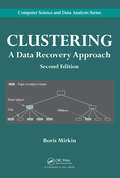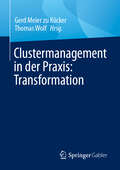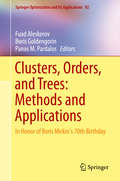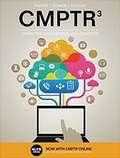- Table View
- List View
Cloud-Native Observability with OpenTelemetry: Learn to gain visibility into systems by combining tracing, metrics, and logging with OpenTelemetry
by Charity Majors Alex BotenLeverage OpenTelemetry's API, libraries, tools and the collector to produce and collect telemetry along with using open-source tools to analyze distributed traces, check metrics and logs, and gain insights into application healthKey FeaturesGet to grips with OpenTelemetry, an open-source cloud-native software observability standardUse vendor-neutral tools to instrument applications to produce better telemetry and improve observabilityUnderstand how telemetry data can be correlated and interpreted to understand distributed systemsBook DescriptionCloud-Native Observability with OpenTelemetry is a guide to helping you look for answers to questions about your applications. This book teaches you how to produce telemetry from your applications using an open standard to retain control of data. OpenTelemetry provides the tools necessary for you to gain visibility into the performance of your services. It allows you to instrument your application code through vendor-neutral APIs, libraries and tools.By reading Cloud-Native Observability with OpenTelemetry, you'll learn about the concepts and signals of OpenTelemetry - traces, metrics, and logs. You'll practice producing telemetry for these signals by configuring and instrumenting a distributed cloud-native application using the OpenTelemetry API. The book also guides you through deploying the collector, as well as telemetry backends necessary to help you understand what to do with the data once it's emitted. You'll look at various examples of how to identify application performance issues through telemetry. By analyzing telemetry, you'll also be able to better understand how an observable application can improve the software development life cycle.By the end of this book, you'll be well-versed with OpenTelemetry, be able to instrument services using the OpenTelemetry API to produce distributed traces, metrics and logs, and more.What you will learnUnderstand the core concepts of OpenTelemetryExplore concepts in distributed tracing, metrics, and loggingDiscover the APIs and SDKs necessary to instrument an application using OpenTelemetryExplore what auto-instrumentation is and how it can help accelerate application instrumentationConfigure and deploy the OpenTelemetry CollectorGet to grips with how different open-source backends can be used to analyze telemetry dataUnderstand how to correlate telemetry in common scenarios to get to the root cause of a problemWho this book is forThis book is for software engineers, library authors, and systems operators looking to better understand their infrastructure, services and applications by leveraging telemetry data like never before. Working knowledge of Python programming is assumed for the example applications that you'll be building and instrumenting using the OpenTelemetry API and SDK. Some familiarity with Go programming, Linux, and Docker is preferable to help you set up additional components in various examples throughout the book.
Cloud-Service-Zertifizierung: Ein Rahmenwerk und Kriterienkatalog zur Zertifizierung von Cloud-Services
by Stephan Schneider Ali SunyaevDie Auslagerung von Services in die Cloud ist mit Risiken verbunden. Dieses Buch liefert ein Rahmenwerk zur Zertifizierung von Services in der Cloud. Herzstück dabei ist ein umfangreicher Kriterienkatalog zum Assessment von Cloud-Services. Dabei wendet sich das Buch an Cloud-Service-Anwender und unterstützt bei der Bewertung, dem Vergleich und der Auswahl von Angeboten. Gerade in kritischen Bereichen wie Sicherheit, Verfügbarkeit und Vertragsfragen unterstützt der Katalog bei der Definition von eigenen Anforderungen. Das Buch eignet sich jedoch auch für Cloud-Service-Anbieter, die es zum Self-Assessment und zur Verbesserung der eigenen Services nutzen können. Das Buch fasst eines der Ergebnisse des dreijährigen Forschungsprojekts ,,Value4Cloud" zusammen, das im Rahmen des Technologieprogramms ,,Trusted Cloud" vom Bundesministerium für Wirtschaft und Technologie gefördert wurde. Es liefert mit 219 Zertifizierungskriterien und einem Zertifizierungsrahmenwerk einen wichtigen Beitrag zum Assessment von Cloud-Services und der Verbesserung von Cloud-Service-Zertifizierungen.
Cloud-Service-Zertifizierung: Ein Rahmenwerk und Kriterienkatalog zur Zertifizierung von Cloud-Services
by Stephan Schneider Ali Sunyaev Sebastian LinsDieses Buch liefert ein Rahmenwerk zur Zertifizierung von Services in der Cloud. Herzstück dabei ist ein umfangreicher Kriterienkatalog zum Assessment von Cloud-Services, der im Forschungsprojekt „Value4Cloud“ , gefördert vom Bundesministerium für Wirtschaft und Technologie, entwickelt wurde. Cloud-Service-Anwender werden bei der Bewertung, dem Vergleich und der Auswahl von Services unterstützt. Das Buch eignet sich auch für Cloud-Service-Anbieter zum Self-Assessment und zur Verbesserung der eigenen Services.
Cloud-Transformation: Wie die Public Cloud Unternehmen verändert
by Roland Frank Gregor Schumacher Andreas TammIn diesem Buch lernen Sie, wie die Public Cloud die Kostenstrukturen von digitalen Geschäftsmodellen und damit bestehende Märkte signifikant verändert. Die Zusammenhänge zwischen den verwendeten Cloud-Architekturen, der Organisation des Unternehmens und den dadurch möglichen Preis- und Geschäftsmodellen werden übersichtlich und für den Einsatz im eigenen Unternehmen nutzbar aufbereitet.Die Autoren erläutern, wie der Reihe nach immer mehr Märkte zu digitalen Märkten werden und welche Rolle die Grenzkosten dabei spielen. Sie beschreiben, wie die cloudbasierte IT die klassische IT disruptiert. Dadurch können kleine Teams mit geringen Investitionen weltweit skalierende Geschäftsmodelle zu Null-Grenzkosten aufbauen. Die wirtschaftlichen Effekte werden anhand konkreter Beispiele nachvollziehbar dargestellt. Zusätzlich erhalten technische Laien einen Überblick, welche Faktoren für die Wettbewerbsfähigkeit ihrer digitalen Geschäftsmodelle besonders wichtig sind und wie Manager diese beeinflussen können. Zum Abschluss gibt das Buch Praktikern einen konkreten Leitfaden an die Hand, wie die Cloud-Transformation im Unternehmen durchgeführt werden kann. Das Buch richtet sich vor allem an Führungskräfte und Mitarbeiter in den Fachbereichen und der IT, die die Cloud-Transformation in ihren Unternehmen vorantreiben möchten.
Cloud-based Intelligent Informative Engineering for Society 5.0 (Chapman & Hall/CRC Cloud Computing for Society 5.0)
by Kaushal Kishor Neetesh Saxena Dilkeshwar PandeyCloud-based Intelligent Informative Engineering for Society 5.0 is a model for the dissemination of cutting-edge technological innovation and assistive devices for people with physical impairments. This book showcases Cloud-based, high-performance Information systems and Informatics-based solutions for the verification of the information support requirements of the modern engineering, healthcare, modern business, organization, and academic communities. Features: Includes broad variety of methodologies and technical developments to improve research in informative engineering Explore the Internet of Things (IoT), blockchain technology, deep learning, data analytics, and cloud Highlight Cloud-based high-performance Information systems and Informatics-based solutions This book is beneficial for graduate students and researchers in computer sciences, cloud computing and related subject areas.
Cloud-based Multi-Modal Information Analytics: A Hands-on Approach (Chapman & Hall/CRC Cloud Computing for Society 5.0)
by Srinivasa K G Srinidhi Hiriyannaiah Siddesh G MCloud based Multi-Modal Information Analytics: A Hands-on Approach discusses the various modalities of data and provide an aggregated solution using cloud. It includes the fundamentals of neural networks, different types and how they can be used for the multi-modal information analytics. The various application areas that are image-centric and videos are also presented with deployment solutions in the cloud. Features Life cycle of the multi- modal data analytics is discussed with applications of modalities of text, image, and video. Deep Learning fundamentals and architectures covering convolutional Neural Networks, recurrremt neural networks, and types of learning for different multi-modal networks. Applications of Multi-Modal Analytics covering Text , Speech, and Image. This book is aimed at researchers in Multi-modal analytics and related areas
Cloud-native Computing: How to Design, Develop, and Secure Microservices and Event-Driven Applications
by Pethuru Raj Skylab Vanga Akshita ChaudharyExplore the cloud-native paradigm for event-driven and service-oriented applications In Cloud-Native Computing: How to Design, Develop, and Secure Microservices and Event-Driven Applications, a team of distinguished professionals delivers a comprehensive and insightful treatment of cloud-native computing technologies and tools. With a particular emphasis on the Kubernetes platform, as well as service mesh and API gateway solutions, the book demonstrates the need for reliability assurance in any distributed environment. The authors explain the application engineering and legacy modernization aspects of the technology at length, along with agile programming models. Descriptions of MSA and EDA as tools for accelerating software design and development accompany discussions of how cloud DevOps tools empower continuous integration, delivery, and deployment. Cloud-Native Computing also introduces proven edge devices and clouds used to construct microservices-centric and real-time edge applications. Finally, readers will benefit from: Thorough introductions to the demystification of digital transformation Comprehensive explorations of distributed computing in the digital era, as well as reflections on the history and technological development of cloud computing Practical discussions of cloud-native computing and microservices architecture, as well as event-driven architecture and serverless computing In-depth examinations of the Akka framework as a tool for concurrent and distributed applications development Perfect for graduate and postgraduate students in a variety of IT- and cloud-related specialties, Cloud-Native Computing also belongs in the libraries of IT professionals and business leaders engaged or interested in the application of cloud technologies to various business operations.
Cloudera Administration Handbook
by Rohit MenonAn easy-to-follow Apache Hadoop administrator's guide filled with practical screenshots and explanations for each step and configuration. This book is great for administrators interested in setting up and managing a large Hadoop cluster. If you are an administrator, or want to be an administrator, and you are ready to build and maintain a production-level cluster running CDH5, then this book is for you.
Cloudera Impala
by John RussellLearn about Cloudera Impala--an open source project that's opening up the Apache Hadoop software stack to a wide audience of database analysts, users, and developers. The Impala massively parallel processing (MPP) engine makes SQL queries of Hadoop data simple enough to be accessible to analysts familiar with SQL and to users of business intelligence tools--and it’s fast enough to be used for interactive exploration and experimentation.
Cloudmoney: Cash, Cards, Crypto, and the War for Our Wallets
by Brett ScottThe reach of Corporations into our lives via cards and apps has never been greater; many of us rarely use cash these days. But what we’re told is a natural and inevitable move is actually the work of powerful interests. And the great battle of our time is the battle for ownership of the digital footprints that make up our lives.In Cloudmoney, Brett Scott tells an urgent and revelatory story about how the fusion of Big Finance and Big Tech requires “cloudmoney”—digital money underpinned by the banking sector—to replace physical cash. He dives beneath the surface of the global financial system to uncover a long-established lobbying infrastructure: an alliance of partners waging a covert war on cash. He explains the technical, political, and cultural differences between our various forms of money and shows how the cash system has been under attack for decades, as banking and tech companies promote a cashless society under the banner of progress.Cloudmoney takes us to the front lines of a war for our wallets that is also about our freedom, from marketing strategies against cash to the weaponization of COVID-19 to push fintech platforms, and from there to the rise of the cryptocurrency rebels and fringe groups pushing back. It asks the most pressing questions:Who benefits from a cashless society and who gets left behind?Is the end of cash the end of true privacy?And is our cloudmoney future closer than we think it is?
Cloudmoney: Efectivo, tarjetas, criptomonedas y la lucha por nuestras carteras
by Brett Scott¿Quién se beneficia de una sociedad sin efectivo? ¿Es el fin del dinero físico el fin de la verdadera privacidad? ¿El monopolio de las criptomonedas está más cerca de lo que pensamos? Hoy en día, muchos de nosotros apenas utilizamos dinero en efectivo y lo pagamos casi todo con tarjetas de crédito o aplicaciones del móvil. Es decir, con dinero digital. Sin embargo, lo que a todos nos parece cómodo, natural e inevitable resulta ser, fundamentalmente, el producto de poderosos intereses y manipulaciones. Cloudmoney es la enloquecedora crónica de este cambio de paradigma. Brett Scott ha buceado bajo la superficie del sistema financiero global para mostrarnos cómo las altas finanzas y las grandes compañías tecnológicas se han aliado con el objetivo de remplazar el dinero físico por el dinero digital, supuestamente en pro de una escurridiza visión de progreso, y cómo ese proceso no es más que una guerra encubierta por nuestros bolsillos y, en última instancia, por nuestra libertad. ¿Es de verdad preferible una sociedad sin efectivo, o supone el fin del dinero físico el fin de la verdadera privacidad? Ese futuro sin metálico, ¿está más cerca de lo que pensamos o aún hay tiempo para cambiar el rumbo? Un libro fundamental para entender qué es el dinero, en qué puede llegar a convertirse y cómo podemos salvarnos de las garras de las poderosas fintech. La crítica ha dicho:«Un texto maravillosamente revolucionario».Yanis Varoufakis «Te han llenado la cabeza con falsedades y confusión sobre el dinero. Este libro sobresaliente te ayudará a entender cómo ha sucedido, quién se beneficia de nuestra ignorancia financiera colectiva y cuál es la mejor manera de contratacar».Raj Patel, autor de Obesos y famélicos «En un libro que es a la vez irreverente, contundente y entretenido, Brett Scott hace añicos los mitos convencionales sobre el dinero en efectivo, el dinero digital y las criptomonedas».Stephanie Kelton, autora de El mito del déficit «Cloudmoney es un libro brillante, fascinante y totalmente accesible: una guía pionera y política de la red de finanzas globales en rápida evolución. Combinando la visión antropológica con la perspicacia financiera de un experto en elsector, Brett Scott expone una visión a largo plazo de cómo la tecnología y las finanzas se están fusionando rápidamente para potenciar el capitalismo corporativo».Kate Raworth, autora de Economía rosquilla «Con este maravilloso, lúcido e importante libro, Brett Scott apunta alto. Compra un ejemplar y asegúrate de pagar en efectivo».Nicholas Shaxson, autor de Las islas del tesoro «Una importante reflexión sobre el nuevo mundo de las finanzas».Lionel Barber, The Financial Times «La carrera hacia una sociedad sin efectivo no tiene nada que ver con la comodidad. Se trata de poder. Brett Scott se desmarca del relato oficial con esta inteligente crítica al dinero digital y al auge de los imperios de la tecnología financiera, al tiempo que ofrece una convincente visión alternativa. No te pierdas este libro».Jason Hickel, autor de Less is More
Cloudonomics
by Joe WeinmanThe ultimate guide to assessing and exploiting the customer value and revenue potential of the CloudA new business model is sweeping the world--the Cloud. And, as with any new technology, there is a great deal of fear, uncertainty, and doubt surrounding cloud computing. Cloudonomics radically upends the conventional wisdom, clearly explains the underlying principles and illustrates through understandable examples how Cloud computing can create compelling value--whether you are a customer, a provider, a strategist, or an investor. Cloudonomics covers everything you need to consider for the delivery of business solutions, opportunities, and customer satisfaction through the Cloud, so you can understand it--and put it to work for your business. Cloudonomics also delivers insight into when to avoid the cloud, and why.Quantifies how customers, users, and cloud providers can collaborate to create win-winsReveals how to use the Laws of Cloudonomics to define strategy and guide implementationExplains the probable evolution of cloud businesses and ecosystemsDemolishes the conventional wisdom on cloud usage, IT spend, community clouds, and the enterprise-provider cloud balanceWhether you're ready for it or not, Cloud computing is here to stay. Cloudonomics provides deep insights into the business value of the Cloud for executives, practitioners, and strategists in virtually any industry--not just technology executives but also those in the marketing, operations, economics, venture capital, and financial fields.
Club College
by Andrew S RosenClub College is a chapter excerpt from Change.edu coming out October 18, 2011.On college campuses nationwide, luxury and learning go hand-in-hand, keeping the price tag for higher education out of reach for many Americans. Education innovator, and chairman and CEO of Kaplan, Inc., Andrew S. Rosen examines today's resort-style campus, providing inspiring solutions for stopping the spending spirals and making college affordable for all. Despite the financial crunch, many American universities have become surprisingly lavish over the past decade, providing state-of-the-art recreation facilities, bistro-style dining, spectacular residence halls that rival fine hotels, and "free" amenities such as Kindles, not to mention multi-million-dollar stadiums and coaches' salaries starting in the high six figures. Showcasing these extraordinary campuses, "Club College" captures the new economic models of higher education, which often divert funds from academics to gain a competitive edge in attracting an elite group of students. On this fascinating tour, Andrew S. Rosen proposes bold new alternatives that focus our nation's dollars on learning.Poised to spark a dialogue about our nation's higher education system, "Club College" makes the classroom the centerpiece of college once again, opening doors to careers for a broad range of talented individuals--arguably our greatest economic asset.
Cluster Analysis and Applications
by Francisco Martínez-Álvarez Rudolf Scitovski Kristian Sabo Šime UngarWith the development of Big Data platforms for managing massive amount of data and wide availability of tools for processing these data, the biggest limitation is the lack of trained experts who are qualified to process and interpret the results. This textbook is intended for graduate students and experts using methods of cluster analysis and applications in various fields.Suitable for an introductory course on cluster analysis or data mining, with an in-depth mathematical treatment that includes discussions on different measures, primitives (points, lines, etc.) and optimization-based clustering methods, Cluster Analysis and Applications also includes coverage of deep learning based clustering methods.With clear explanations of ideas and precise definitions of concepts, accompanied by numerous examples and exercises together with Mathematica programs and modules, Cluster Analysis and Applications may be used by students and researchers in various disciplines, working in data analysis or data science.
Clustering High--Dimensional Data: First International Workshop, CHDD 2012, Naples, Italy, May 15, 2012, Revised Selected Papers (Lecture Notes in Computer Science #7627)
by Francesco Masulli Alfredo Petrosino Stefano RovettaThis book constitutes the proceedings of the International Workshop on Clustering High-Dimensional Data, CHDD 2012, held in Naples, Italy, in May 2012. The 9 papers presented in this volume were carefully reviewed and selected from 15 submissions. They deal with the general subject and issues of high-dimensional data clustering; present examples of techniques used to find and investigate clusters in high dimensionality; and the most common approach to tackle dimensionality problems, namely, dimensionality reduction and its application in clustering.
Clustering Methods for Big Data Analytics: Techniques, Toolboxes and Applications (Unsupervised and Semi-Supervised Learning)
by Olfa Nasraoui Chiheb-Eddine Ben N'CirThis book highlights the state of the art and recent advances in Big Data clustering methods and their innovative applications in contemporary AI-driven systems. The book chapters discuss Deep Learning for Clustering, Blockchain data clustering, Cybersecurity applications such as insider threat detection, scalable distributed clustering methods for massive volumes of data; clustering Big Data Streams such as streams generated by the confluence of Internet of Things, digital and mobile health, human-robot interaction, and social networks; Spark-based Big Data clustering using Particle Swarm Optimization; and Tensor-based clustering for Web graphs, sensor streams, and social networks. The chapters in the book include a balanced coverage of big data clustering theory, methods, tools, frameworks, applications, representation, visualization, and clustering validation.
Clustering Techniques for Image Segmentation
by Abid Yahya Fasahat Ullah SiddiquiThis book presents the workings of major clustering techniques along with their advantages and shortcomings. After introducing the topic, the authors illustrate their modified version that avoids those shortcomings. The book then introduces four modified clustering techniques, namely the Optimized K-Means (OKM), Enhanced Moving K-Means-1(EMKM-1), Enhanced Moving K-Means-2(EMKM-2), and Outlier Rejection Fuzzy C-Means (ORFCM). The authors show how the OKM technique can differentiate the empty and zero variance cluster, and the data assignment procedure of the K-mean clustering technique is redesigned. They then show how the EMKM-1 and EMKM-2 techniques reform the data-transferring concept of the Adaptive Moving K-Means (AMKM) to avoid the centroid trapping problem. And that the ORFCM technique uses the adaptable membership function to moderate the outlier effects on the Fuzzy C-meaning clustering technique. This book also covers the working steps and codings of quantitative analysis methods. The results highlight that the modified clustering techniques generate more homogenous regions in an image with better shape and sharp edge preservation.Showcases major clustering techniques, detailing their advantages and shortcomings;Includes several methods for evaluating the performance of segmentation techniques;Presents several applications including medical diagnosis systems, satellite imaging systems, and biometric systems.
Clustering and Routing Algorithms for Wireless Sensor Networks: Energy Efficiency Approaches
by Pratyay Kuila Prasanta K JanaWireless Sensor Networks have a wide range of applications in different areas. Their main constraint is the limited and irreplaceable power source of the sensor nodes. In many applications, energy conservation of the sensor nodes and their replacement or replenishment due to the hostile nature of the environment is the most challenging issue. Energy efficient clustering and routing are the two main important topics studied extensively for this purpose. This book focuses on the energy efficient clustering and routing with a great emphasis on the evolutionary approaches. It provides a comprehensive and systematic introduction of the fundamentals of WSNs, major issues and effective solutions.
Clustering for 21st Century Prosperity: Summary of a Symposium
by Charles W. WessnerResponding to the challenges of fostering regional growth and employment in an increasingly competitive global economy, many U. S. states and regions have developed programs to attract and grow companies as well as attract the talent and resources necessary to develop regional innovation clusters. These state and regionally based initiatives have a broad range of goals and increasingly include larger resources commitments, often with a sectoral focus and often in partnership with foundations and universities. Recent studies, however, have pointed out that many of these efforts lack the scale and the steady commitment needed for success. This has prompted new initiatives to coordinate and concentrate investments from a variety of federal agencies to develop research parks, business incubators, and other strategies to encourage entrepreneurships and high-tech development in the nation's regions. Understanding the nature of innovation clusters and public policies associated with successful cluster development is therefore of current relevance. Clustering for 21st Century Prosperity identifies best practices with regard to goals, structures, instruments, modes of operation, synergies across private and public programs, funding mechanisms and levels, and evaluation efforts. The committee, under the Board on Science, Technology, and Economic Policy (STEP) is reviewing selected state and regional efforts to capitalize on federal and state investments in areas of critical national needs. This review includes both efforts to strengthen existing industries as well as specific technology focus areas such as nanotechnology, stem cells, and advanced energy in order to better understand program goals, challenges, and accomplishments. As part of this study, the committee is convening a series of public workshops and symposia involving responsible local, state, and federal officials and other stakeholders. Drawing from discussions at these symposia, fact-finding meetings, and commissioned analyses of existing state and regional programs and technology focus areas, the committee will subsequently produce a final report with findings and recommendations focused on lessons, issues, and opportunities for complementary U. S. policies created by these state and regional initiatives.
Clustering in Bioinformatics and Drug Discovery (Chapman & Hall/CRC Computational Biology Series)
by John David MacCuish Norah E. MacCuishWith a DVD of color figures, Clustering in Bioinformatics and Drug Discovery provides an expert guide on extracting the most pertinent information from pharmaceutical and biomedical data. It offers a concise overview of common and recent clustering methods used in bioinformatics and drug discovery.Setting the stage for subsequent material, the firs
Clustering, Classification, and Time Series Prediction by Using Artificial Neural Networks (SpringerBriefs in Applied Sciences and Technology)
by Oscar Castillo Patricia Melin Martha RamirezThis book provides a new model for clustering, classification, and time series prediction by using artificial neural networks to computationally simulate the behavior of the cognitive functions of the brain is presented. This model focuses on the study of intelligent hybrid neural systems and their use in time series analysis and decision support systems. Therefore, through the development of eight case studies, multiple time series related to the following problems are analyzed: traffic accidents, air quality and multiple global indicators (energy consumption, birth rate, mortality rate, population growth, inflation, unemployment, sustainable development, and quality of life). The main contribution consists of a Generalized Type-2 fuzzy integration of multiple indicators (time series) using both supervised and unsupervised neural networks and a set of Type-1, Interval Type-2, and Generalized Type-2 fuzzy systems. The obtained results show the advantages of the proposed model of Generalized Type-2 fuzzy integration of multiple time series attributes. This book is intended to be a reference for scientists and engineers interested in applying type-2 fuzzy logic techniques for solving problems in classification and prediction. We consider that this book can also be used to get novel ideas for new lines of research, or to continue the lines of research proposed by the authors of the book.
Clustering: A Data Recovery Approach, Second Edition
by Boris MirkinOften considered more of an art than a science, books on clustering have been dominated by learning through example with techniques chosen almost through trial and error. Even the two most popular, and most related, clustering methods-K-Means for partitioning and Ward's method for hierarchical clustering-have lacked the theoretical underpinning req
Clustermanagement in der Praxis: Transformation
by Thomas Wolf Gerd Meier zu KöckerIn der regionalen Wirtschaftsentwicklung nehmen Clusterinitiativen eine große Bedeutung ein, gerade wenn es um die Steigerung von Innovationskraft bei kleineren und mittleren Unternehmen geht. Doch wie lassen sich Clusterinitiativen sinnvoll als Instrument in die Regionalentwicklung einbetten und wie kann gutes Clustermanagement als zentrale Schlüsselfunktion aussehen, damit die Netzwerke ihr volles Potenzial entfalten können? In den letzten Jahren gab es vermehrt gelungene Beispiele dafür, wie Clusterinitiativen Mehrwerte im Sinne ihrer Akteure generieren können. Dieses Buch stellt erfolgreiche Transformationen von Clusterinitiativen vor und gibt einen Überblick über die Chancen und Herausforderungen im täglichen Geschäft. Es bietet eine praxisorientierte Hilfestellung und viele Best-Practice-Beispiele speziell für Clustermanager, aber auch für Wirtschaftsförderungen, Kommunen, Verwaltung, Unternehmen, Wissenschaft, Verbände und Vereine.
Clusters, Orders, and Trees: In Honor of Boris Mirkin's 70th Birthday (Springer Optimization and Its Applications #92)
by Panos M. Pardalos Boris Goldengorin Fuad AleskerovThe volume is dedicated to Boris Mirkin on the occasion of his 70th birthday. In addition to his startling PhD results in abstract automata theory, Mirkin's ground breaking contributions in various fields of decision making and data analysis have marked the fourth quarter of the 20th century and beyond Mirkin has done pioneering work in group choice, clustering, data mining and knowledge discovery aimed at finding and describing non-trivial or hidden structures--first of all, clusters, orderings and hierarchies--in multivariate and/or network data. This volume contains a collection of papers reflecting recent developments rooted in Mirkin's fundamental contribution to the state-of-the-art in group choice, ordering, clustering, data mining and knowledge discovery. Researchers, students and software engineers will benefit from new knowledge discovery techniques and application directions.
Cmptr³: Computer Applications and Concepts
by Katherine T. Pinard Robin M. Romer Deborah MorleyCMPTR's easy-reference, paperback book presents course content through visually engaging chapters as well as Chapter Review Cards that consolidate the most important material into a ready-made study tool. CMPTR introduces the latest updates in Microsoft Office, including Windows 10, Edge web browser, and Office 2016 applications with fun facts, tips, and walk-through videos.
